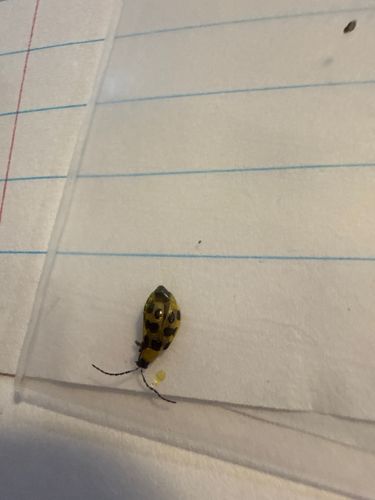Squash Lady Beetle
Scientific Name: Epilachna borealis
Order & Family: Coleoptera, Coccinellidae
Size: Typically 7-9 mm (0.28-0.35 inches) in length.

Natural Habitat
Gardens, fields, and agricultural areas where cucurbit plants (squash, pumpkins, cucumbers, melons) are grown.
Diet & Feeding
Unlike most lady beetles that are predatory, the Squash Lady Beetle is herbivorous. Both adults and larvae feed exclusively on the leaves, stems, and fruits of plants in the cucurbit family (Cucurbitaceae).
Behavior Patterns
Adults overwinter in protected locations such as leaf litter or beneath bark. They emerge in spring to lay yellow, spindle-shaped eggs in clusters on the undersides of cucurbit leaves. Larvae are spiny, yellowish, and also feed on plant tissue. There can be one to three generations per year depending on the region.
Risks & Benefits
Potential risks: The Squash Lady Beetle is considered a pest in gardens and agricultural settings as its feeding can cause significant damage to cucurbit crops, reducing yields and quality. Heavy infestations can skeletonize leaves and scar fruits. Potential benefits: None as a pest species. Its presence indicates a healthy cucurbit population for its survival.
Identified on: 10/12/2025